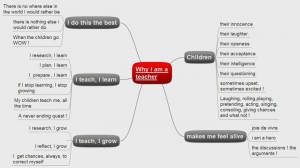Volume 3 Month 4 Day 4 – Good Teacher
A bad teacher is negatively pessimistic A good teacher is positively optimistic A bad teacher swears all the time A good teacher cares in their prime A bad teacher passes on rude fear A good teacher has on good ears A bad teacher discourages A good teacher encourages A bad... Comment
Volume 2 Month 12 Day 22- Teachers’ Performance Evaluation
Teachers’ Performance Evaluation An effective supervisory process makes a principal a better evaluator when summative evaluations are required. Teachers will always respect the supervision process when the principle is familiar with their teaching style, has engaged in conversations with them on teaching, and has seen student performance and work in... Comment
Volume 2 Month 9 Day 19 – Reflective Teaching
Becoming an Effective Teacher Teaching What does it mean to teach? Moore (2001) defines teaching as “the actions of someone who is trying to assist others to reach their fullest potential in all aspects of development”. Teachers must be mentors, effective subject matter experts, counselors and social psychologists. Teachers... Comment
Volume 2 Month 9 Day 18 – Small Science Series – Class IV
Small series is a series of innovative primary science books developed by Homi Bhabha Centre for Science Education. The aim of the series is to engage students and teachers together in a joyful and meaningful learning experience. Small science fosters the natural curiosity of young children. It discourages rote learning... Comment
Volume 2 Month 9 Day 17 – To be a teacher …
httpv://www.youtube.com/watch?v=I9LwrAQvVl4 Vishal Jain 1
Volume 2 Month 9 Day 16 – Do you Teach or Do you Educate?
httpv://www.youtube.com/watch?v=W0fJKvdjQgs Vishal Jain 1
Volume 2 Month 9 Day 10 – Small Science Series
Small series is a series of innovative primary science books developed by Homi Bhabha Centre for Science Education. The aim of the series is to engage students and teachers together in a joyful and meaningful learning experience. Small science fosters the natural curiosity of young children. It discourages rote learning... Comment
Volume 2 Month 9 Day 9 – The changed role of Teachers
The changed role of Teachers Download : The-changed-role-of-teachers Rachna Misra Comment
Volume 2 Month 9 Day 1 – Lesson Plans
Free lesson plans written by teachers for teachers. Like you. Classroom Resources has hundreds of original lesson plans for elementary, middle, and high school students. Borrow them as-is or use them to spark your own lesson plans. Download : Lesson Plans Vishal Jain Comment









